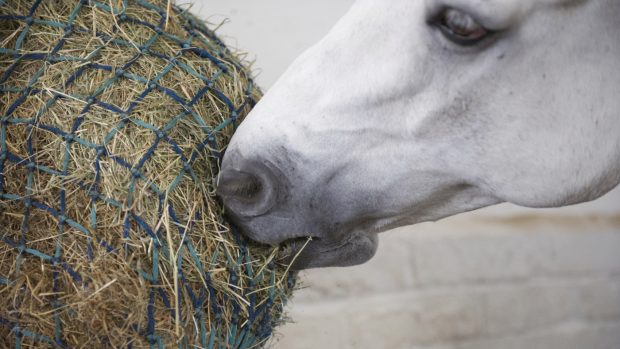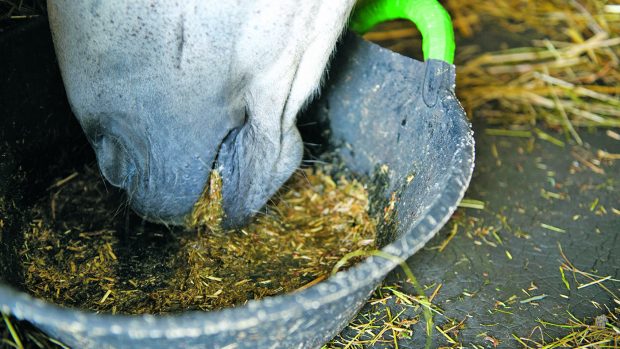The energy content of a feedstuff is often viewed in terms of its capacity to excite a horse or put weight on, but these effects are more to do with the source of energy and each horse’s metabolism than the energy content.
Every feed contains energy. You can’t see it and there isn’t the equivalent of a feed voltmeter to measure it directly, but it’s there. The energy content is calculated from its chemical characteristics, so that the fibre in food confers some energy, as do the starch, sugar and oil parts and also some of the protein.
Depending on the content of each of these, nutritionists are then able to ascribe energy values to feedstuffs, usually in units of megajoules of digestible energy (DE) per kilo (MJ/kg).
Many horses receive most of their energy from fibre. Only horses which aren’t turned out or are in such hard work that they receive little hay or haylage will receive their energy from starch, oil and protein.
Fibre is a complex structure made up of many different kinds of digestible lignin that the horse cannot break down using its own digestive enzymes and which requires processing by microbial fermentation in the hind gut.
As the fibre takes time to break down, the energy sources are received steadily by the horse and this is why fibre feeds have a reputation of not exciting horses.
Starch and sugar are almost the opposite of fibre. They are more rapidly broken down in the small intestine and the products of this process, simple sugars, are rapidly absorbed. So, in comparison to fibre, they are “fast energy”, sometimes too fast for excitable types.
All working horses need some starch and sugar in their diets. Some, but not too much, starch is required to keep muscle glycogen stores maintained and at brain level, glucose is the only food this hub of the central nervous system recognises.
Oil is also digested and rapidly absorbed in the small intestine, but its use as a muscle fuel is slower than starch or sugar and this is why it has a reputation for being a good alternative energy source.
The horse wouldn’t use protein as a fuel of choice, but if it’s in excess levels in the diet, it can be broken down and used as energy. This happens when horses receive ad lib spring grass or large quantities of high-protein feeds. This conversion of protein into energy is metabolically expensive and is why people on Hollywood-style high-protein, low-carbohydrate diets lose weight.
In addition, one of the breakdown products, urea, is excreted in the urine, and in poorly ventilated stables can lead to smells and respiratory problems.




